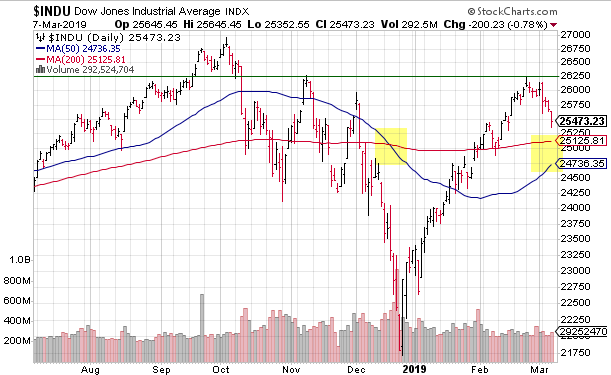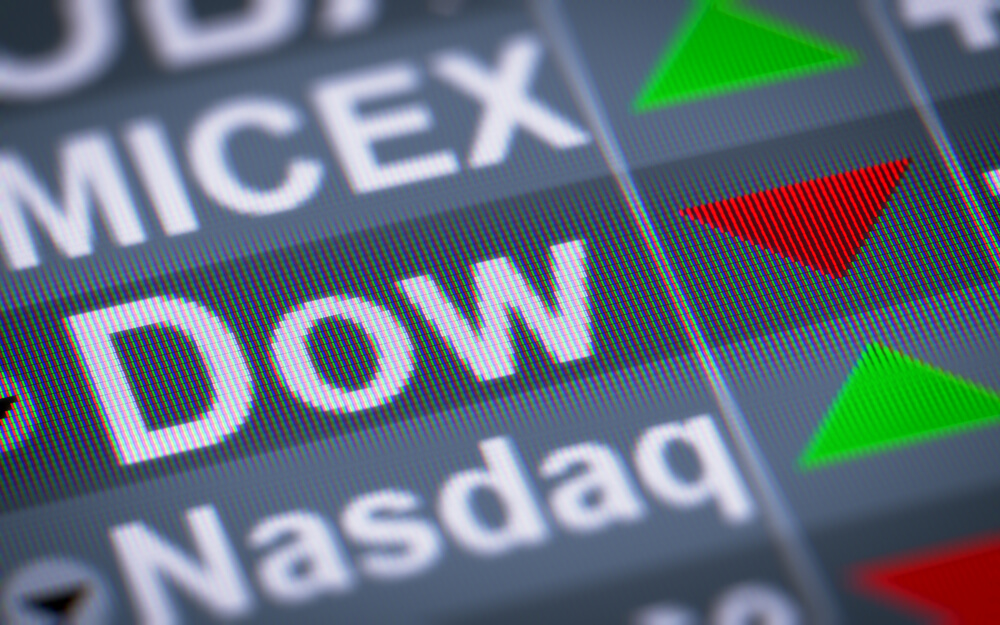The Dow Jones Industrial Average has gone on one heck of a rally during the past three months.
Since bottoming out the day before Christmas, the Dow has soared more than 17 percent.
This feat is doubly impressive since it’s occurring roughly three months after the average’s 50-day and 200-day moving averages completed a death cross.
In a true twist of fate, these key trend lines are now just 1.57 percent away from reversing course completely.
Yes, the Dow’s 50-day and 200-day moving averages are on the verge of a golden cross.

As you would suspect, a golden cross is commonly seen as a bullish technical indicator — the opposite of its more dire counterpart, the death cross.
You would expect Wall Street investors to be cheering such a development and hailing it as proof that the bull is back in the U.S. markets.
But you would be wrong.
Across the board, economists and Wall Street pundits are sending out warnings and calling for cautious investing.
What’s more, these warnings aren’t Chicken Little ravings … there’s data to back up these concerns:
- The European Central Bank (ECB) announced Thursday that it was putting interest rate hikes on hold and offering banks a fresh round of low-cost loans.
- Chinese exports fell 20.7 percent in February, falling well short of expectations for a 2.5 percent decline. Economists are worried that this plunge reflects weakening global demand.
- Hopes are dropping for a U.S.-China trade deal that could boost Chinese and U.S. exports.
- Canada’s central bank held interest rates steady this week and reversed its hawkish stance, citing a slowdown in the global economy.
- Construction spending unexpectedly fell 0.6 percent in December, compared to expectations of a 0.2 percent rise.
- The February ADP private sector jobs report showed that the U.S. added just 183,000 jobs in February, while economists were expecting a rise of 189,000. The figure also was down massively from January’s growth of 300,000 jobs.
- Finally, the U.S. trade deficit widened to $59.80 billion in December and exports fell to $205.10 billion — their third straight decline.
Looking over this data, it’s clear that the rest of the globe is being hit considerably harder than the U.S. economy. In fact, the situation state-side only looks like a mild seasonal slump.
The question we have to ask ourselves is: Is the market at a pivot point?
On one hand, we have a wealth of negative global economic data. It’s not dire yet, but the warning signs are clear.
On the other hand, the U.S. market continues to chug along. What’s more, U.S. markets like the Dow are prone to climbing such walls of worry when they first appear, instead of succumbing to fear.
The bottom line is that investors could see more upside in the U.S. market over the short term. If the global economic slow down continues during this period, it may be time to get defensive. After all, the U.S. doesn’t operate in an economic bubble.




